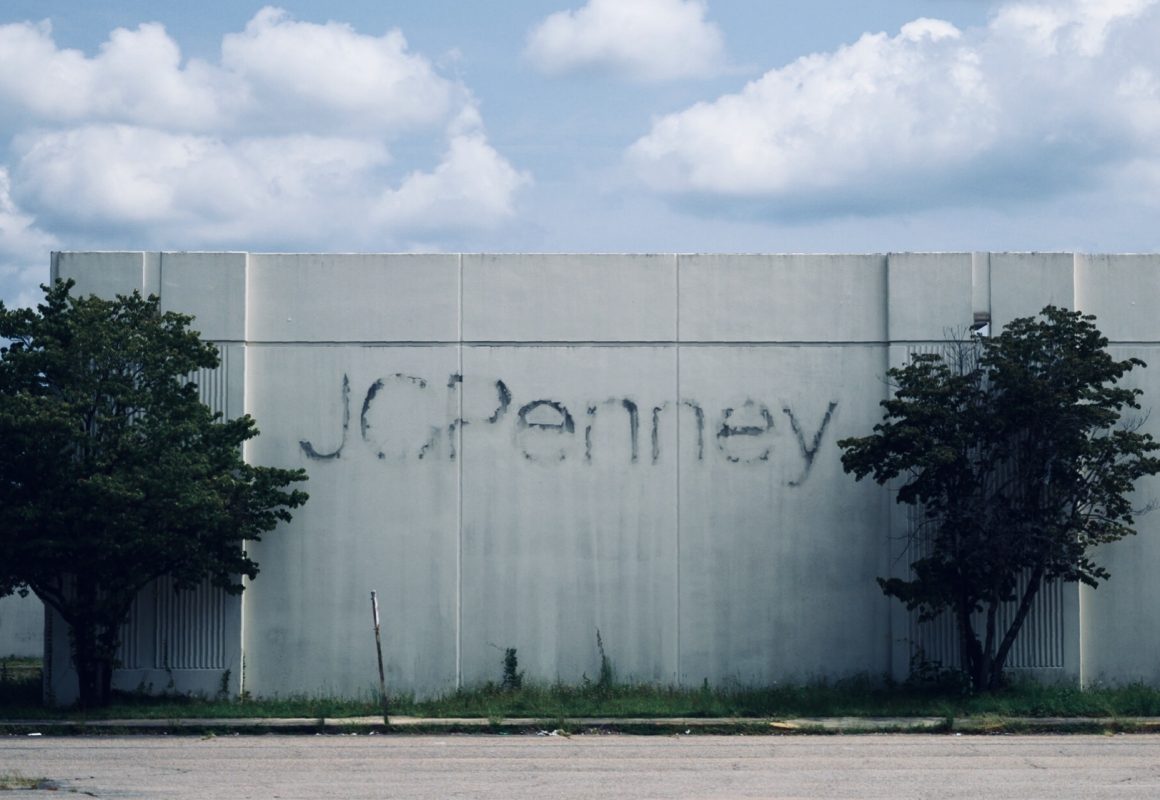In his book Capitalist Realism, which proposes that capitalism and its ills have become viewed by our culture as immutable, Mark Fisher came to a conclusion about class struggle that echoed Lenin’s statement from What Is To Be Done: “There are decades where nothing happens; and there are weeks where decades happen.” Fisher wrote that “The long, dark night of the end of history has to be grasped as an enormous opportunity. The very oppressive pervasiveness of capitalist realism means that even glimmers of alternative political and economic possibilities can have a disproportionately great effect. The tiniest event can tear a hole in the grey curtain of reaction which has marked the horizons of possibility under capitalist realism. From a situation in which nothing can happen, suddenly anything is possible again.” But how can we create such a fissure in the established order? How can we bring history towards a new reality?
A collapsing social order
The conditions of today’s United States show how far gone capitalism is capable of making society when the bourgeois socioeconomic system can sustain itself in a zombified form, long past its productive peak and long after its historical obsolescence. Since neoliberalism was implemented half a century ago in order to keep profits up amid unprecedented capitalist decline, our civilization has been in a progressive state of collapse, sold as the inevitable direction that history takes. Under neoliberalism, our cultural hegemony is incapable of thinking outside the terms of the existing socioeconomic order, which can only survive through the engineering of this perpetual upward wealth transfer. All of the misery that this produces is therefore seen as unavoidable, and the communities that have been ravaged are blamed for their fate.
How bourgeois society views the country’s ever-growing zones of poverty is equivalent to how imperialism’s benefactors view the countries which are impoverished by the parasitic global extraction of neo-colonialism. The reality of the way so many people are living is hidden from the view of those with social power, and the underclass is vilified as a dangerous force whose ills are of its own making. The only ones from the topside who get up close to the homeless camps, slums, and ghettos are the police, who are conditioned to view these communities in the same way an occupying soldier views the local population. You can see this in the city of Eureka, near my hometown, where sections of decrepit warehouse buildings are surrounded by tents and people sleeping on the sides of walls. Just a few blocks away, elegant 19th century buildings facilitate the business of the local capitalist class, who send their fascist-minded law enforcement officers to patrol the city’s decaying peripheral areas.
This is the image of a collapsing society, and it’s representative of places that can be found in any other given area throughout the country. Even right next to the city’s bourgeois hub, along the most active streets, there are glaring signs of collapse that stick out like flaming car wrecks on a highway. There are motels that have been abandoned for a year or so, boarded up and surrounded by fences while plants grow copiously in their parking lots. There are similarly left behind stores or homes with graffiti on their newly nailed-in wood, next to the drug-addicted and mentally ill people who frequently wander the area. There’s no way to maintain the illusion that this socioeconomic system is working. Unless one sees the growing poverty and urban rot as mandates for more reactionary violence, like the cops and their bourgeois masters do.
The scenes I’ve described have been common in America for generations, especially since our long depression began in 2008, but the pandemic has been accelerating the rate of deterioration. All the while, our dominant institutions—the criminal justice system, the media, the levels of government—are unified in maintaining the machine which worsens our crises. A mismanaged pandemic frustrates working people’s livelihoods, rendering most of them overwhelmed and politically paralyzed. An increasingly militarized and impune police state is always ready to terrorize those who try to enact social change. A corporate-controlled media works to cultivate support for wars, while concealing the conditions which are actually relevant to people’s daily lives.
It can feel only natural to seek out a sudden, simple catharsis that can immediately release us from our living nightmare. Engaging in adventurist or hypermasculine acts of violence, joining political cults that promise uncomplicated routes towards societal change, turning to individualistic notions of self-improvement, becoming part of gangs or extreme religious groups, becoming nihilists who are indifferent towards the evils around us, or becoming addicted to various self-damaging vices are the default paths that people turn to. In a society that deprives us of healthy social outlets, people will latch on to whatever feels like it can provide help. When Marx and Engels warned that the lumpenproletariat, those who operate on the peripheries of society, are at risk of falling into habits which make them incompatible with revolutionary organizing, they did so with the awareness that our social order is to blame for these habits. We all have agency, but those who fall into such destructive patterns wouldn’t be doing so if their conditions were different.
A zombie bourgeois culture that seeks to prevent revolution
Faced with this crushing reality of a society that’s eating itself, and has no future should it continue on its current path, it can be easy to embrace the idea that revolution will necessarily come out of our situation at some point. That the perpetual decline of the people’s conditions will without any uncertainty lead them towards replacing the existing social order. In reality, this replacement won’t come unless we put in the work to make it come. It’s certainly inevitable that our growing societal ills will lead to future mass unrest, and to further changes in the consciousness of the masses. But whether this unrest will preclude an actual transferring of state power from the bourgeoisie to the proletariat, and whether this goal is what becomes embraced as part of the change in popular consciousness, depends on how well revolutionaries do their job. As What Is To Be Done? concludes about this question of whether the spontaneous actions of the masses in reaction to their conditions will necessarily lead towards revolution:
It is often said that the working class spontaneously gravitates towards socialism. This is perfectly true in the sense that socialist theory reveals the causes of the misery of the working class more profoundly and more correctly than any other theory, and for that reason the workers are able to assimilate it so easily, provided, however, this theory does not itself yield to spontaneity, provided it subordinates spontaneity to itself. Usually this is taken for granted, but it is precisely this which Rabocheye Dyelo [one of pre-revolutionary Russia’s revisionists] forgets or distorts. The working class spontaneously gravitates towards socialism; nevertheless, most widespread (and continuously and diversely revived) bourgeois ideology spontaneously imposes itself upon the working class to a still greater degree.
Lenin explained this process of bourgeois disruption of the class struggle as an insidious one, where the cultural hegemony that the bourgeoisie has thus far imposed can defeat the rise of a genuine revolutionary consciousness: “why, the reader will ask, does the spontaneous movement, the movement along the line of least resistance, lead to the domination of bourgeois ideology? For the simple reason that bourgeois ideology is far older in origin than socialist ideology, that it is more fully developed, and that it has at its disposal immeasurably more means of dissemination. And the younger the socialist movement in any given country, the more vigorously it must struggle against all attempts to entrench non-socialist ideology, and the more resolutely the workers must be warned against the bad counsellors who shout against ‘overrating the conscious element.’”
Lenin’s last sentence means we can’t neglect to talk about our most important goal—the overthrow of the capitalist state and the creation of a new socialist workers state—under the rationale that most people aren’t currently on board with this goal. The only reason most of them don’t currently share it is because they’ve been deprived of the educational resources necessary to become aware that such an idea exists in the first place. The way things are is all they’ve ever known. This enforced ignorance makes them vulnerable to the bourgeoisie’s propaganda, which diverts attention away from the class struggle. Bourgeois culture is a zombie presence, threatening to crush the potential for revolution even as the economic system which created bourgeois culture collapses in on itself.
As our conditions compel more people to seek routes towards change, modern America’s agents of bourgeois deception are working to lead them into futile paths, to divert their spontaneity towards false “solutions” which don’t threaten the power of the bourgeoisie. We’re seeing this today primarily in the Democratic Socialists of America, the most popular “socialist” organization in the country, that calls itself socialist despite merely wanting to reform the capitalist state into a welfare apparatus. An apparatus that more equally distributes imperialism’s spoils, while continuing to steal from the exploited countries like Scandinavia’s social democracies do.
This reality about the class character and global role of the Nordic model’s “socialism” is obscured by those who peddle the DSA’s agenda, an agenda which has naturally led the organization to assist in imperialism’s attempts at carrying out coups. Coups within the Latin American countries that are actually working to build socialism. The perpetuation and expansion of neo-colonialism, which such regime change operations would fulfill, is an inseparable part of every significant tendency within the imperial center’s political sphere. Even as imperialism’s core implodes, and the spoils gained by the imperialist model dry up, these bourgeois agents seek to reinforce the ideology which maintains this failing setup.
The path towards our liberation runs through ideas that exist outside of this imperialist framework, that include the liberation of both the imperial center’s masses and those throughout the imperial peripheries. We can’t have one without the other, we can’t win our liberation if we choose to embrace imperialism’s ideology and set ourselves up against other victims of capitalism. We must work among the people, finding out what their material needs are, and address these needs. We must work to educate the people on the nature of their conditions, and on what a historical analysis shows needs to be done to change these conditions. We must do so with a proper understanding of U.S. imperialism’s global role, and of the countries and movements which are fighting against it. We must train for whatever challenges our task may bring, working out, learning how to use weapons, and building survivalist resources like gardens. All without losing sight of our goal of seizing the means of production, communication, public services, and trade, which will let us transition society into a new phase beyond the rule of the capitalist class. This is how we’ll free ourselves from our dystopia.—————————————————————————
If you appreciate my work, I hope you become a one-time or regular donor to my Patreon account. Like most of us, I’m feeling the economic pinch during late-stage capitalism, and I need money to keep fighting for a new system that works for all of us. Go to my Patreon here.








